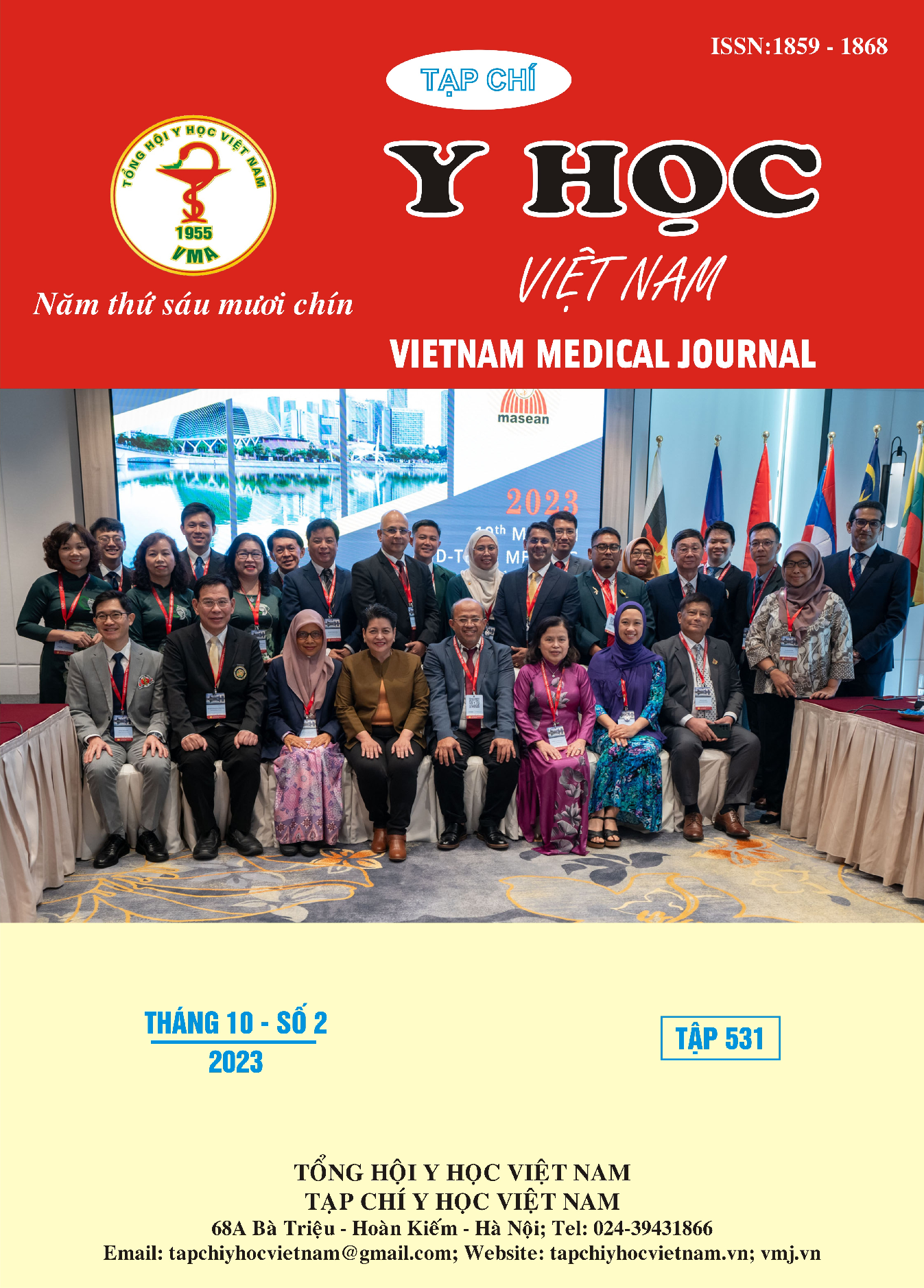EVALUATE THE EFFECTIVENESS OF PAIN REDUCTION IN LABOR USING DURAL PUNCTURE EPIDURAL ANESTHESIA
Main Article Content
Abstract
Objects: To evaluate the effectiveness of pain reduction in labor using the method of dural puncture epidural anesthesia. Methods: RCT study on 80 patients divided two groups. Group 1: Using epidural anesthesia with mixture of ropivacain 0,1% and fentanyl 2 mcg/ml. Group 2: Using dural puncture epidural anesthesia with mixture of ropivacain 0,1% and fentanyl 2 mcg/ml. Results: During the stages of labor, VAS score < 4 and there is no difference between the two study groups (p > 0,05). When controlling the uterus and perineal sutures, VAS score in group 2 lower group 1 (2,72 ± 1,57 vs 2,55 ± 0,91 and 2,76 ± 1,64 vs 2,41 ± 0,87, p < 0,05) The postpartum pain relief time in group 2 is longer than group 1 (9,93 ± 1,91 hrs vs 7,52 ± 1,37 hrs, p < 0,05). Conclusion: Dural puncture epidural anesthesia, when performed in obstetric procedures, can provide better pain relief compared to epidural anesthesia. It has a faster onset and longer – lasting pain reduction after vaginal delivery.
Article Details
Keywords
Dural puncture epidural anesthesia, vaginal delivery, labor
References
2. Cappiello E, O’Rourke N, Segal S, Tsen LC. A randomized trial of dural puncture epidural technique compared with the standard epidural technique for labor analgesia. Anesth Analg. 2008;107(5):1646-1651. doi:10.1213/ ane.0b013e318184ec14
3. Tan HS, Reed SE, Mehdiratta JE, et al. Quality of Labor Analgesia with Dural Puncture Epidural versus Standard Epidural Technique in Obese Parturients: A Double-blind Randomized Controlled Study. Anesthesiology. 2022; 136(5): 678-687. doi:10.1097/ALN.0000000000004137
4. Nguyễn Thị Hồng Vân (2009). Giảm đau trong chuyển dạ đẻ bằng gây tê NMC bệnh nhân tự điều khiển (PCEA). Hội Nghị Gây Mê Hồi Sức Sản Phụ Khoa Lần Thứ VI.
5. Vũ Thị Hồng Chính (2010). Đánh giá hiệu quả của phương pháp gây tê ngoài màng cứng trong chuyển dạ đẻ tại bệnh viện Phụ Sản Trung Ương, Luận văn thạc sỹ, Trường đại học Y Hà Nội.


